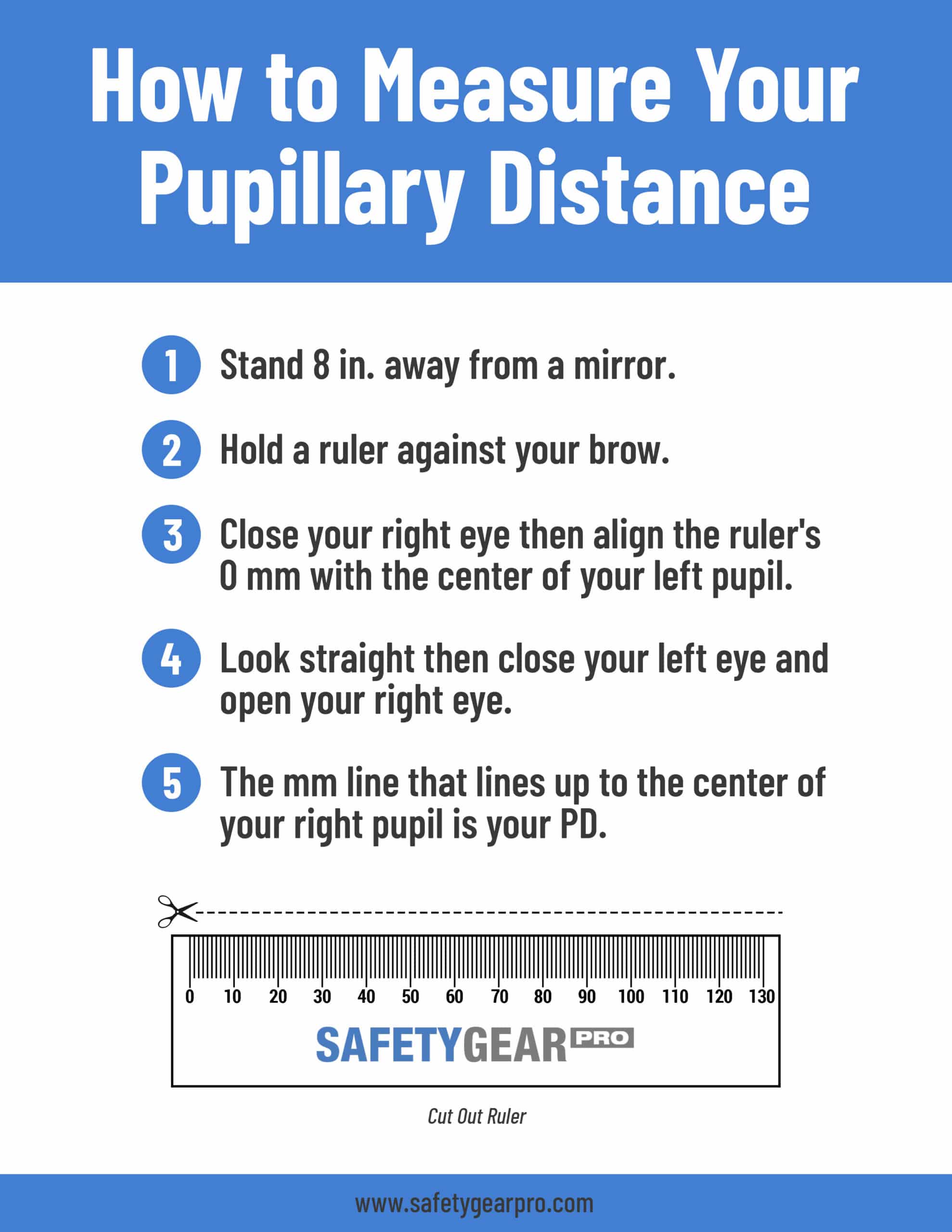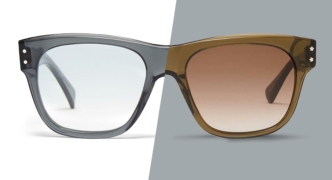
PD stands for Pupillary Distance and it is the distance from one pupil’s center to the other pupil’s center. When you visit an eye doctor, they relay the PD information to the company in charge of creating and supplying lenses. Therefore, they use the PD to create the lenses, and that’s why they are the same.
Everyone has a different PD. The PD changes as you grow older, but when you hit adulthood, it remains unchanged. If your number increases as you grow older, your PD will not. Knowing your PD is beneficial if you like ordering glasses online.
What is Pupillary Distance
- Introduction to Pupillary Distance (PD)
- Understanding PD
- How to Measure Pupillary Distance (PD)
- Special Consideration
- Additional Tips
How Do I Measure My Pupillary Distance (PD)?
The eye doctor measures your PD during your eye test. Another time your eye doctor may measure your PD is when you place an order for prescription eyeglasses. Can you get your PD measured online? Unfortunately, no, but there are ways you can acquire the information about your PD. What should you do if you are missing PD?
- Visit an eyeglasses store to get your PD measured
- Contact the eyeglasses store you previously bought your prescription eyeglass from
- Contact your previous eye doctor to see if they still may have your PD information in their records
- Or you can try to measure your own PD
If you are missing PD in the prescription, here are the steps you need to follow to know what your PD is:
Step 1: Place a ruler on the bridge of your nose and use a magnifying glass if you need to see the numbers more clearly.
Step 2: Close your left eye and line the “0” with the pupil’s center of the right eye.
Step 3: Do not move your head or the ruler, as you close your right eye and open your left eye. The ruler should line up with the pupil’s center of the left eye, read it. This number stands for the distance PD in millimeters, thus giving you your distance PD.
Step 4: Repeat the entire process three times and try to be consistent when you do, as you do not want to be way off in your measurement. You have to make sure you do not move your head or the ruler as you measure your PD. If one of your eyes is weaker than the other eye, this process will be much more difficult for you to perform alone.
Step 5: When you are ordering glasses online, you need to enter the PD you got when you measured. If, you need to calculate your near PD subtract “three” from the number. For example: Your distance PD is 70 so when you subtract 3 from it, you receive 67.
Tip: Instead of lining the ruler with the pupil’s center, line it up with the pupil’s edge. Use the inside of the pupil’s edge and the outside of the pupil’s edge to measure. Doing it this way will provide you with a more precise measurement.
If you can’t do it yourself, you can always call a friend to help you measure your PD. Here are the steps:
Step 1: Sit down in a room, making sure that you are about 45cm apart from each other. Keep both of your eyes open as your friend measures your PD. However, your friend needs to keep one of her eyes closed when she measures your PD.
Step 2: Your friend needs to hold the ruler against your forehead. You need to look into the open eye of your friend as they take your measurements. The “0” on the ruler needs to line with one of the pupil’s center. Write down the number that aligns with the other pupil’s center. Both of you should not move your heads during this entire process.
Just like last time, you want to measure at least three times. This will give you your near distance, which is 57 and to get your distance PD, add “three” to distance PD, giving you 60. A general rule of thumb is that most adults have a PD from 55 to 65 while most children have a PD from 42 to 54.
Question— What If My PD Has Two Numbers?
If your PD has two numbers, do not worry, as it is very simple to figure out. If the two numbers are the same, add them together to get your PD number. If the two numbers are different, the higher number of for distance and the lower number is for near vision.
Click on the image below to download PD Ruler:

Most online glasses companies ask their customers to provide them with a PD measurement and if you do not know yours, you will not be able to order. If you don’t know your PD, just follow the aforementioned steps to know your PD.
Frequently Asked Questions about Pupillary Distance
What is PD?
- PD stands for Pupillary distance or interpupillary distance which is the distance between the centers of the pupils of the eyes.
How do you find the pupillary distance on a prescription?
- Pupillary distance measurements are not always listed on your prescription but it’s easy enough to obtain using a ruler and a mirror.
How is pupillary distance measured?
-
- Stand in front of a mirror.
-
- Hold a ruler against your brow.
-
- Close your right eye and then align the ruler’s 0 mm with the center of your left pupil.
-
- Look straight, close your left eye then open your right eye.
- The line that lines up to the center of your right pupil is the PD.
How important is the PD for glasses?
- Pupillary distance is needed to make a pair of prescription glasses because it tells the manufacturer of the glasses where to put the optical center on each lens.
What happens if pupillary distance is wrong?
- If your pupil distance does not match the centers of your pupils are, your vision will be affected. The wrong pupillary distance induces eye strain, fatigue, headaches and blurry vision.































I recieved a request for my order the PD is 63.5
My PD is 54 i have order safety glasses before with no issues. Ivan 209-292-1132
I received a request for my PD it’s 67
Do this company accept insurance coverage?
For most vision insurance plans, SafetyGearPro.com will be considered an out-of-network provider / servcice.
You can submit your Safety gear pro eyewear purchase for reimbursement by following steps listed below:
1- Complete the Out-of-Network Reimbursement Form for your provider.
2- Attach your itemized SafetyGearPro.com order receipt or invoice. This will be emailed to you when you place your order and it will also be included with your actual purchase.
3- Submit the receipt along with the form to your vision insurance company for reimbursement.
If you need assistance with finding your itemized invoice, please contact our customer support team at Sales@safetygearpro.com.